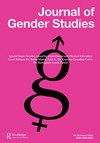颠覆性的习惯:黑人天主教修女在长期的非裔美国人自由斗争
IF 1.5
3区 社会学
Q2 SOCIAL ISSUES
引用次数: 1
摘要
这一观点不仅限于达利特女性,还包括种姓性别如何在微妙的环境中影响达利特男性以及上层种姓男性和女性。在微观语境中探索霸权系统压迫的过程和功能,可以扩展我们对其在多重语境中的各种表现形式及其相互联系的理解,并为编织反叙事创造一个平台。达利特女权主义者应该提倡以团结为基础的女权主义,重视“差异”。Anandita Pan不仅探讨了达利特女权主义的不同之处,还调查了它的不同之处。此外,如果达利特妇女抗议的“差异”要被历史化,那么这些斗争应该被重新描述,强调达利特妇女经历的特殊性。她分析了知识与权力之间有争议的关系,并对知识生产进行了深刻的讨论。这样的分析镜头被用来强调有争议的叙述和重新创造历史。虽然Anandita Pan对跨社区、身份、宗教和地区的联盟的可能性持乐观态度,但她承认实现这一目标的困难。然而,她并没有详细讨论这些问题。此外,虽然这本书只关注种姓和性别之间的交集,但由于地位的不同,人们不能忽视达利特妇女之间的群体内部差异。然而,考虑到令人窒息的社会政治气候和达利特女权主义逐渐进入学术界,这本书是一个及时的干预,以消除同质的女权主义声音,并将关于交叉性的辩论置于背景中,以便批判性地分析印度主流女权主义的“姐妹”主张和达利特运动或达利特政治中的种姓集中化。本文章由计算机程序翻译,如有差异,请以英文原文为准。
Subversive habits: Black Catholic nuns in the long African American freedom struggle
standpoint is not restricted only for/by Dalit women, but also how caste-gender affects Dalit men as well as upper-caste men and women in subtle contexts. Exploring the processes and functions of hegemonic systemic oppression in micro contexts could expand our understanding of their varied manifestations in multiple contexts, their inter-connections, and create a platform for weaving counternarratives. Dalit feminists should advocate solidarity-based feminism that valorizes ‘difference’. Anandita Pan not only explores what is different about Dalit feminism but also investigates ‘how’ it is different. Moreover, if ‘difference’ in Dalit women’s protest is to be historicized, then these struggles should be reinscribed, underlining the specificities of Dalit women’s experiences. She analyses the contentious relationship between knowledge and power and engages in an incisive discussion on knowledge production. Such analytical lens is used to highlight contesting narratives and re-create history. While Anandita Pan is optimistic concerning the possibilities of coalition across communities, identities, religions, and regions, she acknowledges the difficulties in achieving this. However, she does not address these issues in much detail. Furthermore, while the book focuses exclusively on the intersections between caste and gender, one cannot be oblivious to the intra-group differences among Dalit women due to their varying positionality. Nevertheless, given the stifling socio-political climate and Dalit feminism’s gradual entry into the academia, this book is a timely intervention to dismantle homogeneous feminist voices and contextualize the debate on intersectionality in order to critically analyse both the ‘sisterhood’ claims of mainstream Indian feminism and centralization of caste in Dalit movement or Dalit politics.
求助全文
通过发布文献求助,成功后即可免费获取论文全文。
去求助
来源期刊

Journal of Gender Studies
Multiple-
CiteScore
4.40
自引率
0.00%
发文量
52
期刊介绍:
The Journal of Gender Studies is an interdisciplinary journal which publishes articles relating to gender from a feminist perspective covering a wide range of subject areas including the Social and Natural Sciences, Arts and Popular Culture. Reviews of books and details of forthcoming conferences are also included. The Journal of Gender Studies seeks articles from international sources and aims to take account of a diversity of cultural backgrounds and differences in sexual orientation. It encourages contributions which focus on the experiences of both women and men and welcomes articles, written from a feminist perspective, relating to femininity and masculinity and to the social constructions of relationships between men and women.
 求助内容:
求助内容: 应助结果提醒方式:
应助结果提醒方式:


